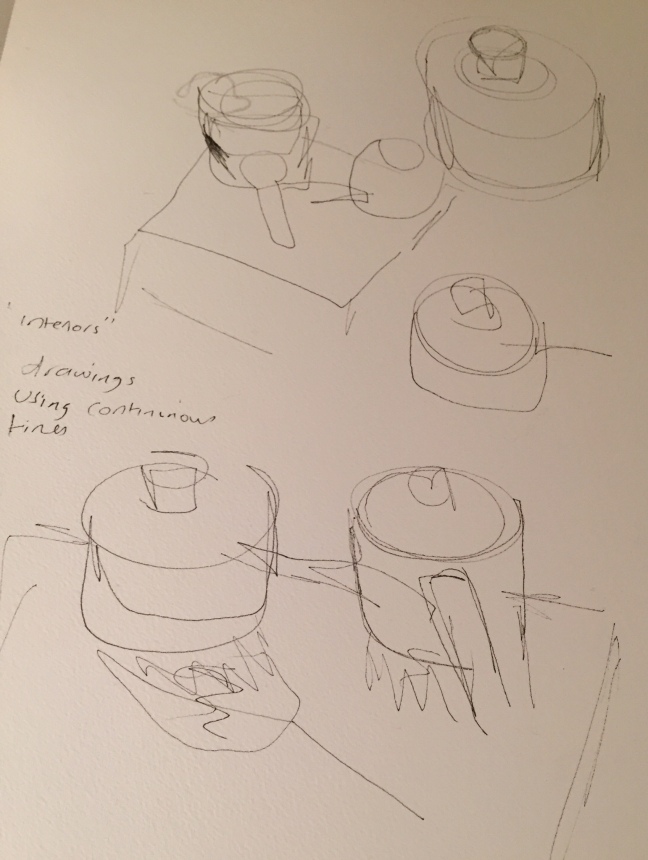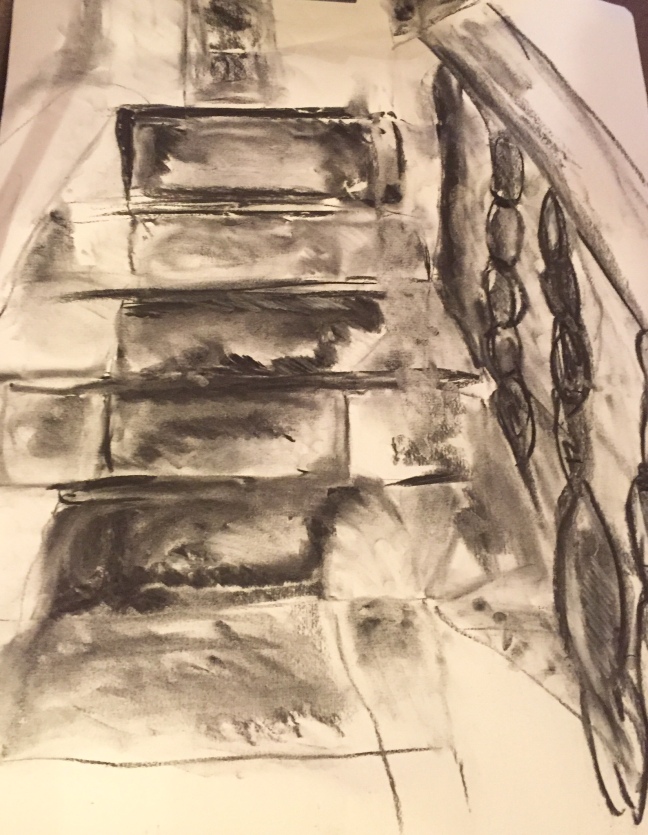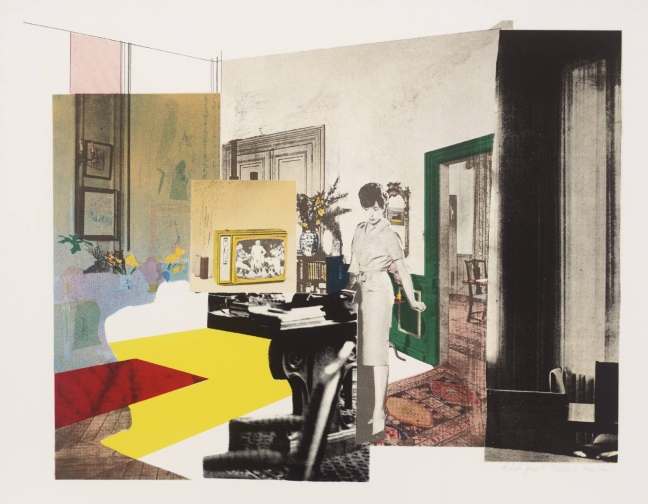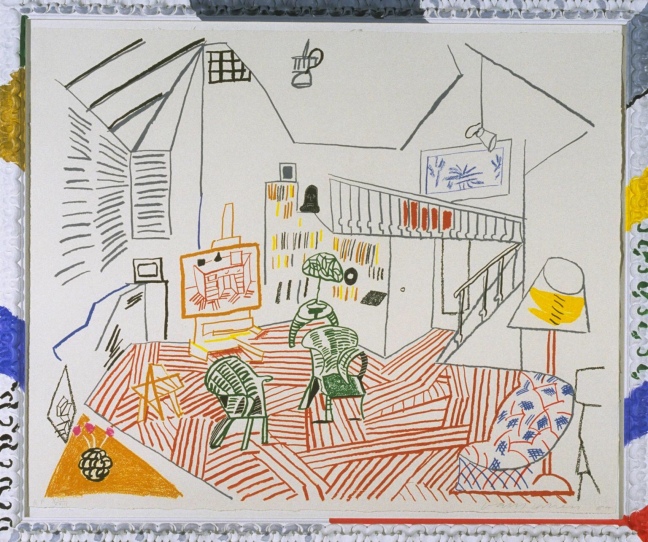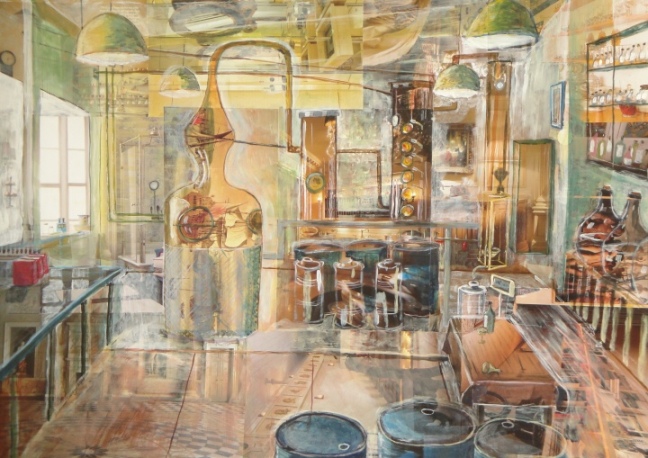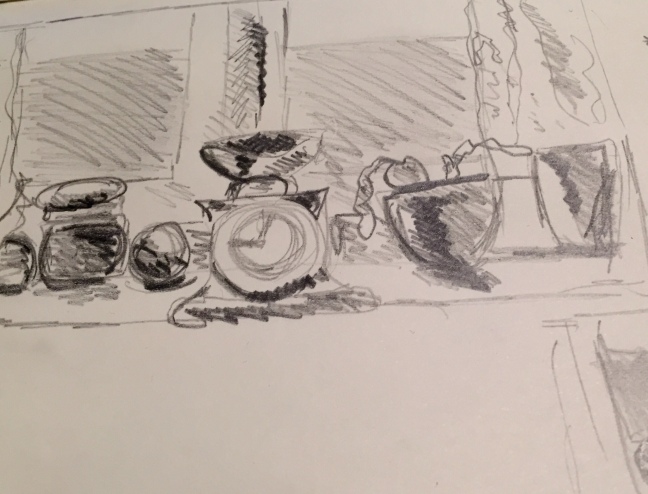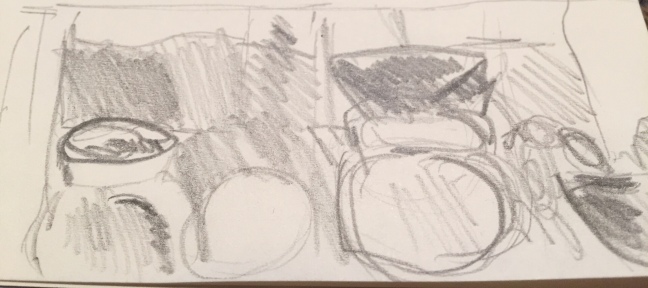VISIT TO THE DAMIEN HIRST GALLERY AND THE TATE BRITAIN
On a cold but bright sunny Saturday morning in January I attended my first OCA study visit.
The group met OCA tutor Gerald Deslandes at the Damien Hirst Newport street gallery in Lambeth.
The Newport gallery opened 3 months ago by artist Damien Hirst to showcase his personal art collections. John Hoyland’s power stations paintings 1964-1982 is the gallery’s first exhibition.
The gallery is an impressive Victorian building that has been converted into a spacious , modern , light white cube space. I was impressed by the use of the space the gallery is housed on two floors with stairwells with viewing areas to look down onto the art works below.
John Hoyland was born in 1934 he was a British abstract artist. We started by looking at Hoylands earlier paintings. Gerald began by asking the group to chose a painting which we then discussed. We then had an interesting discussion on abstract art – these are some of our collective thoughts :
- we felt abstract art can be about creating an image and exploring some of the relationships between colour and emotions.
- the artist could be using the painting to create an illusion
- some of Hoyland’s early paintings give the viewer the v sense that they could fall into the painting
- Hoyland used red a lot in his early works and we were fairly divided on what we felt the red colour represented some ideas were emotions, fire,hot,passion, calm, dangerous
- is abstract art primarily about decision making?
- is abstract art subjective?
- is it about emotions?
- is there a sense of harmony , a sense of mood . We all agreed that Hoyland appears to have been careful in how the colours were placed onto the canvas and there was a sense of something happening underneath the painting. There is deliberate blurring of colours and blocks of pure colour. The colours themselves look contemporary as they are very industrial looking with acid hues. Looking closely at the paintings we wondered whether Hoyland has used a roller to apply some of the geometric blocks of colour? The later paintings in the upstairs galleries explore different paint effects impasto layers of thick paint , he introduced more colours into his pallet and there are splashes of paint on the canvas and some areas of the paint are deliberately rubbed off.
The paintings of the 1970’s leading into the 1980’s have a change of visual language – the colours are pink and sugary with added texture some of the group remarked that the colours were like sickly cupcakes and a joyful festival.
the later painting up to the 1980’s again change in nature moving from geometric forms to including reference to the outside world. There is a use of bold bright primary colours leaving behind the sugary and acid hues. The vivid blue colour is reminiscent of the Mediterranean Sea , hot and sunny. These paintings are definitely like illusions as there is a sense that the viewer is looking at a harbour sweeping out to a vivid blue sea. I really liked these paintings as they were fun and joyful.
MY PERSONAL THOUGHTS ON HOYLAND EXHIBITION
I really enjoyed the exhibition the gallery was nice and the art was hung well. We were also allowed to take non flash photographs. The large white walls and the pale grey flooring enhanced the large expansive paintings. I particularly enjoyed the visual experience of the later art. But ,I did in general feel that the paintings on the whole did not reveal anything about Hoylands personality or emotions. Also to me they Didn’t offer anything new as Hoyland ‘s paintings somehow seemed fairly standard abstract paintings of the time. They really did not offer anything that had not been done before. I really enjoyed our group discussion and Gerald led the discussions in a very knowledgeable and interesting manner.
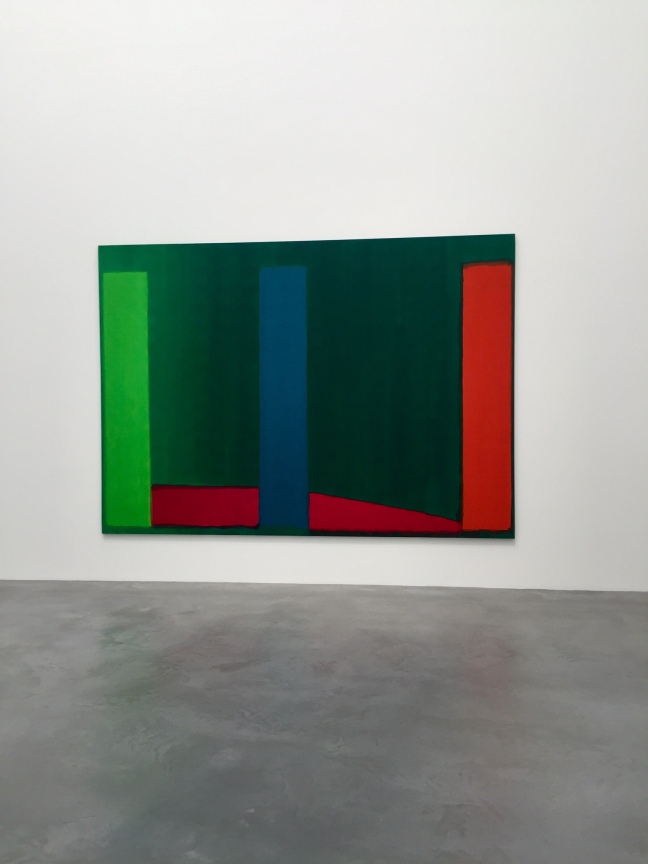
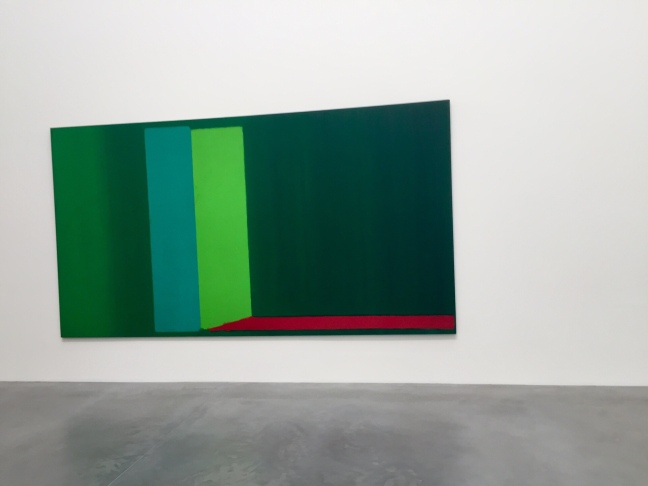
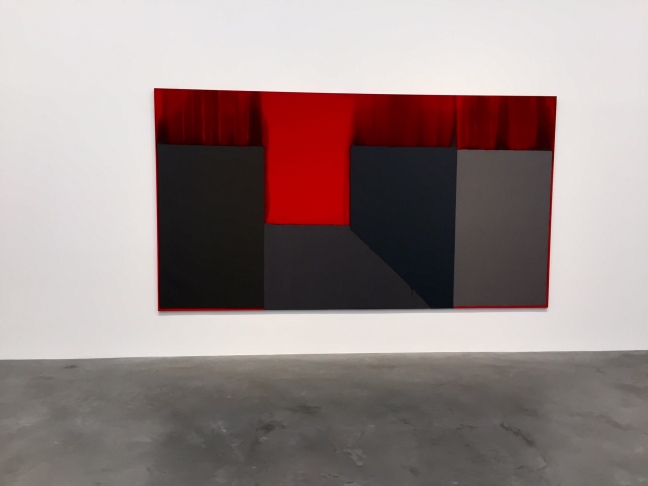
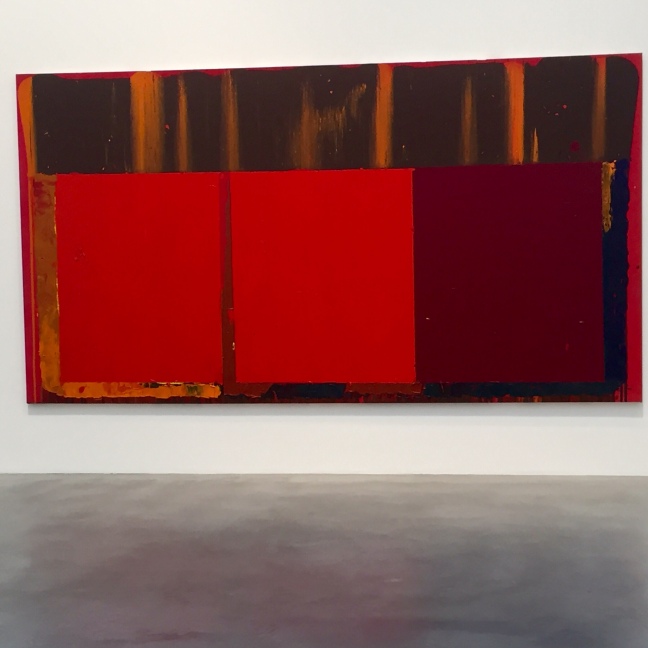
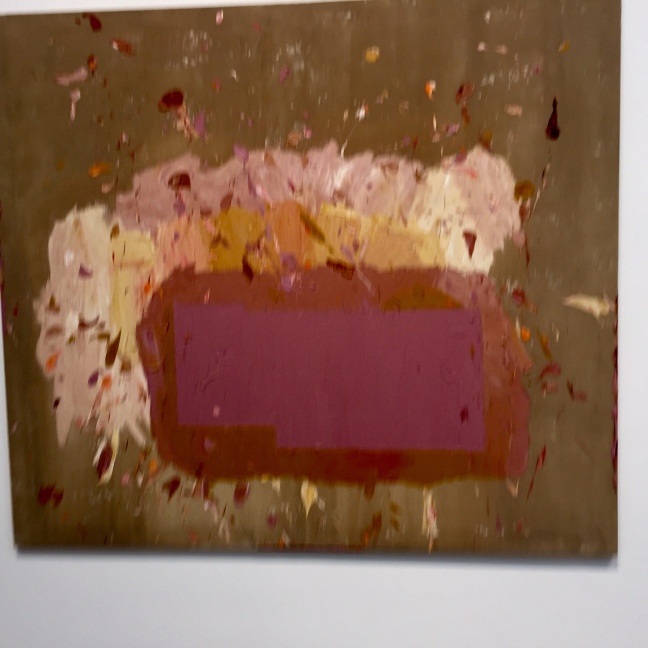
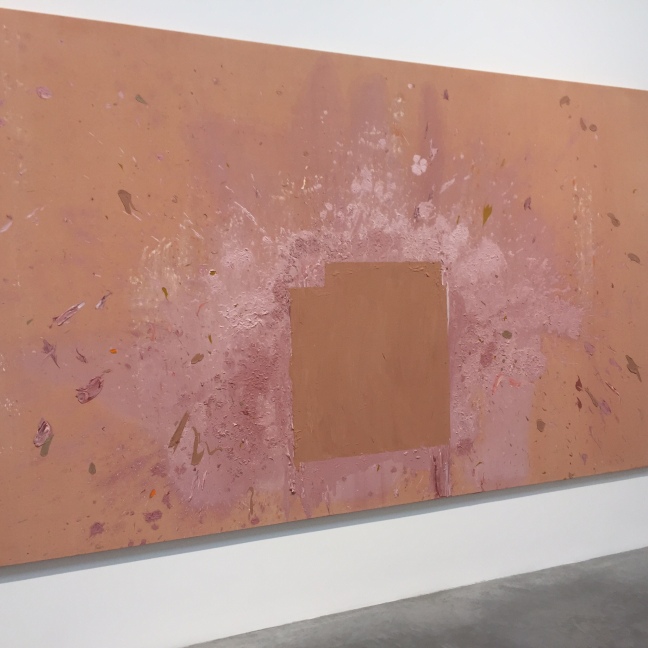
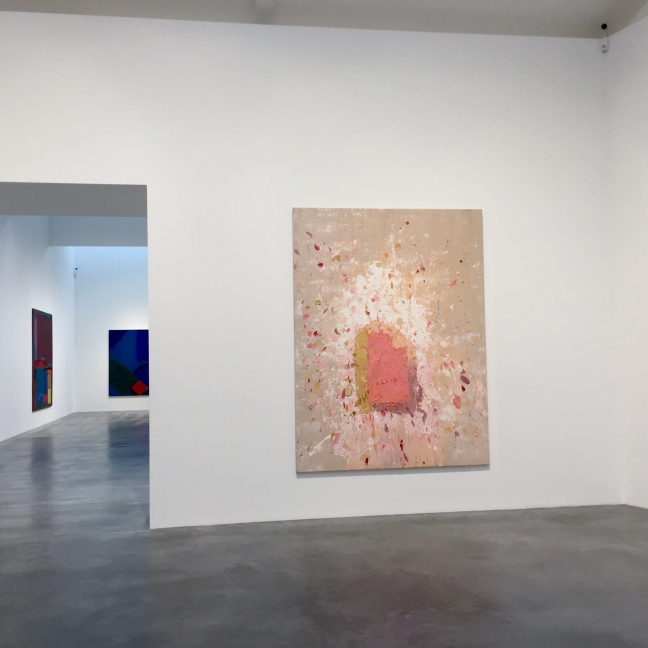
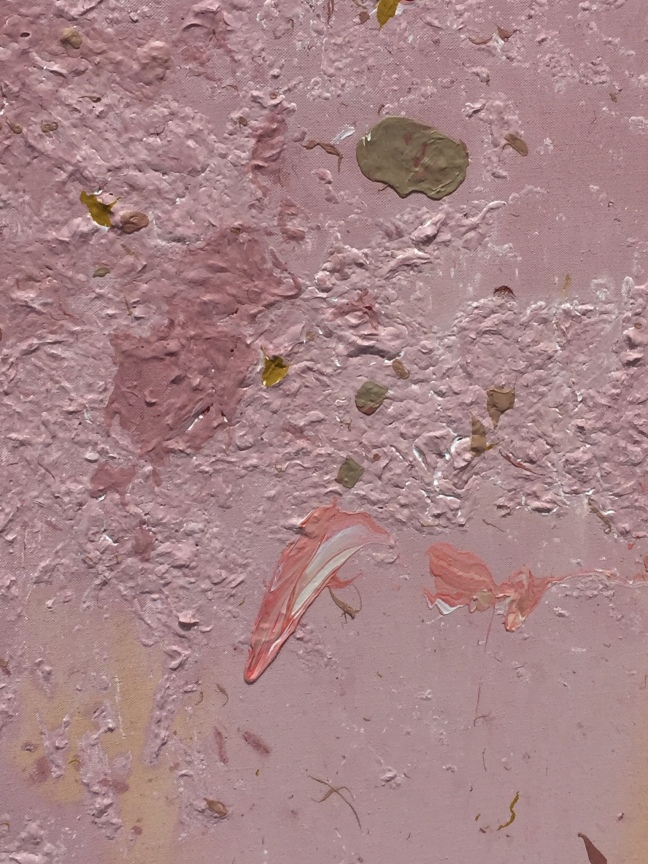
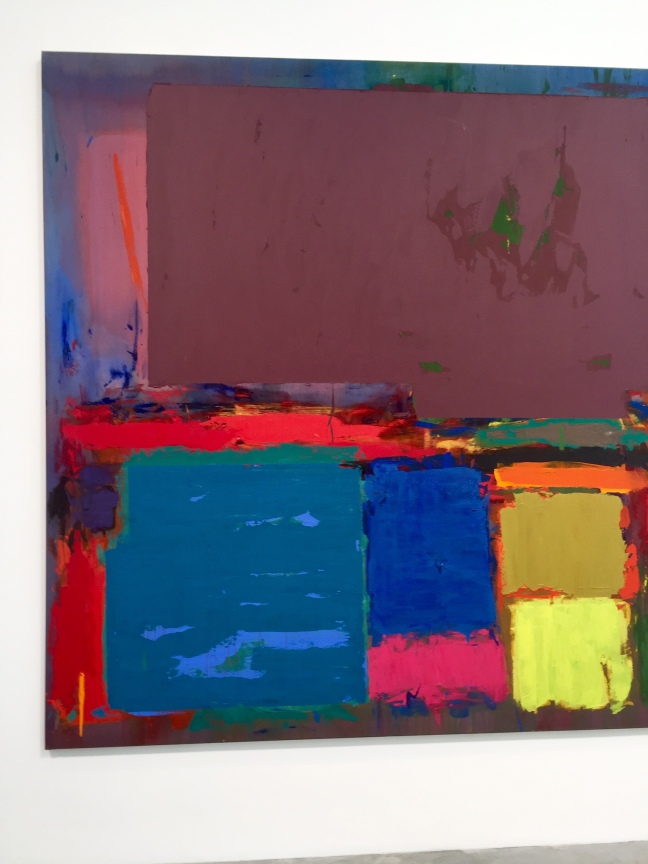
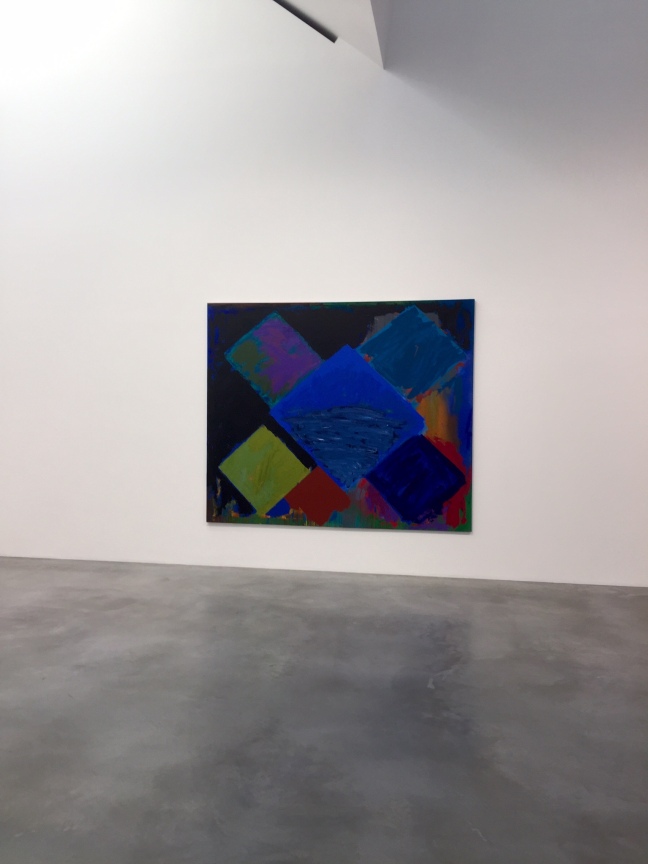
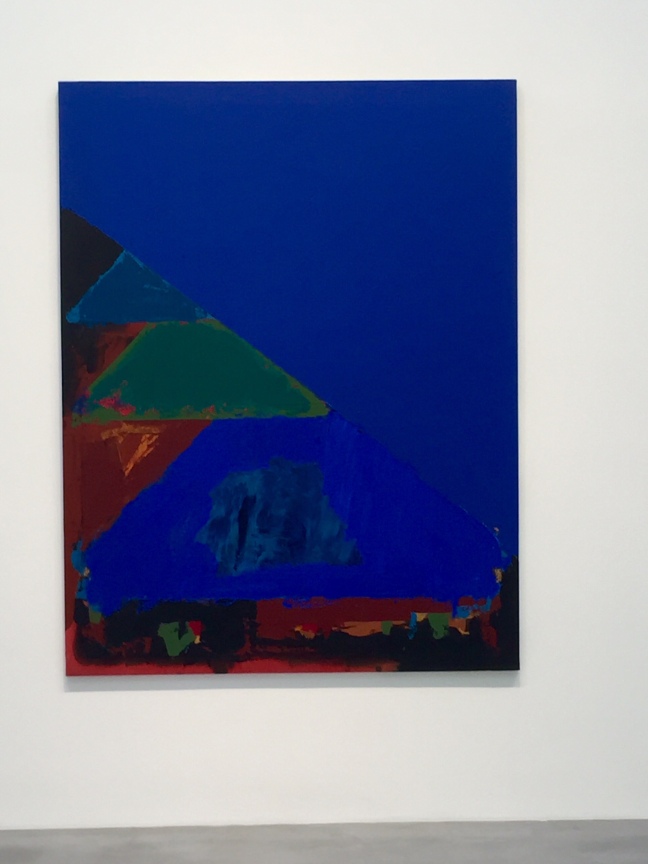
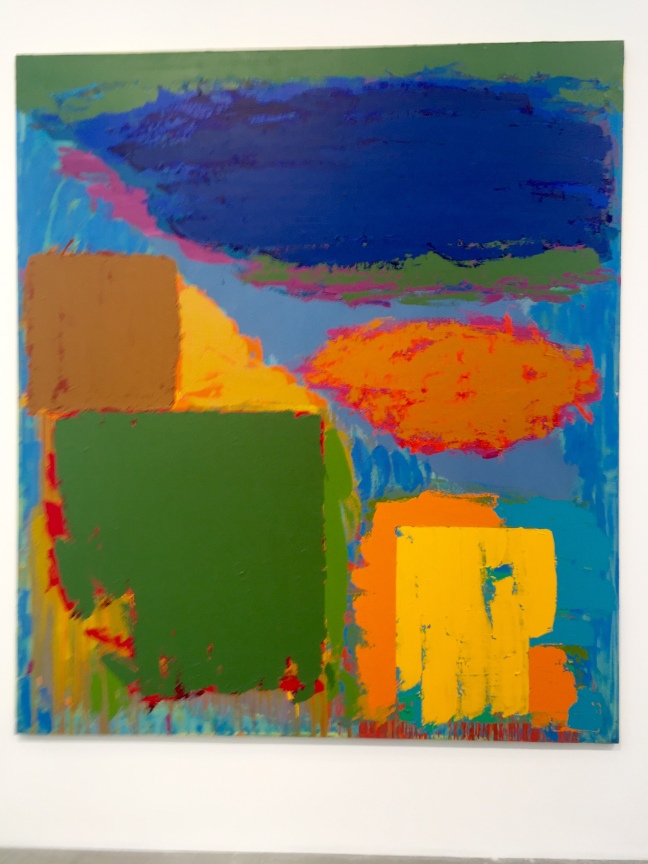
FRANK AUERBACH
After leaving Newport street we walked to the Tate Britain to visit the Frank Auerbach exhibition. First impressions Auerbach’s work seemed a complete contrast to Hoyland’s work. Auerbach now in his 80’s is still an active artist.
The exhibition covers Auerbach’s work from the 1950’s to the present decade. What was immediately evident is that many of the common themes in Auebach’s work is represented in all of his work over the 60 years covered in the exhibition.
Auerbach applies his paint ( mainly oils) in thick painstaking layers of colour. Many of the paint layers are several inches in width adding a structural heavy quality to the paintings. I feel the paint has been worked on over a period of time allowing a gradual process of building up the colours and composition. The paintings literally appeared to come alive when viewed from a distance.
i found Auerbach’s portraits very intriguing as he is mainly interested in the plains and structure of the whole head he does not appear to be concerned with minute details such as the eyes and hair, facial features are represented in a sketchy manner – yet these portraits seem very much alive and real.Most of the portraits are just of reclining heads and they had no obvious gender. I really liked Auerbach’s charcoal portrait drawings the way he uses simple marks to suggest the plains of the face and the character and personality of the sitter. These drawing have a clever simplicity with blending , scribbling and erasing the lighter tones yet they are very effective and emotive. I liked his drawing ‘ David Landau seated ‘ as Auerbach includes the sitters hands which are simply and sparingly suggested with minimal details , yet the drawing really works.
Another recurring theme of the exhibition is Auerbach’s large paintings of North London. These paintings are very bright with his customary thick impasto paint layers. Bright primary yellow paint features in many of these paintings. I liked the way Auerbach appears to draw with his medium, building up lines and texture with the paint. Some of the later views of Camden in the 1990’s demonstrate a fluid handling of the paint which to me effectively convey’s light and feeling into the composition. A good example of this momentarily different handling of paint is ‘Albert street 11 ‘ . These paintings are also on a much smaller scale.
The last section of the exhibition is a mixed example of Frank Auerbach’s work curated by Catherine Lampert. There was an portrait in charcoal of Catherine Lampert dated 1985. The drawing is large and unlike many of his other head drawings he seemed to be more focused on Catherine’s individual features as he includes her flowing hair which gives her a very youthful and feminine appearance. Also in this section of the exhibition there was an interesting large interior view of Auerbach’s studio space from the 1980’s that cleverly convey’s a sense of space.
MY PERSONAL THOUGHTS ON FRANK AUERBACH EXHIBITION
on the whole I really enjoyed the Frank Auerbach exhibition and I especially liked his use of charcoal and chalk to convey a sense of liveliness in his many portrait studies. I thought these drawing were very emotive and intimate. I didn’t really like his Camden paintings they to me seemed to lack that special spark that his oil portraits have. Although I did like the composition of ‘Albert street 11 ‘.
I did feel that Auerbach seemed to stick to painting the same things unlike other British artists such as Hockney who seems to be always exploring new things, Auerbach paints what he knows – whether this is true of the whole of his career I do not know? Or did the curator of the show choose to focus on Auerbach’s Camden work and his head studies?
I really feel I need to find out more about his work as I left the exhibition with many unanswered questions.
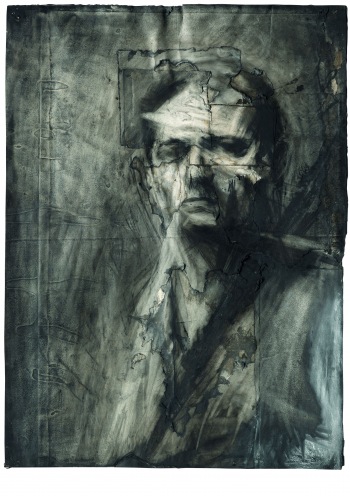
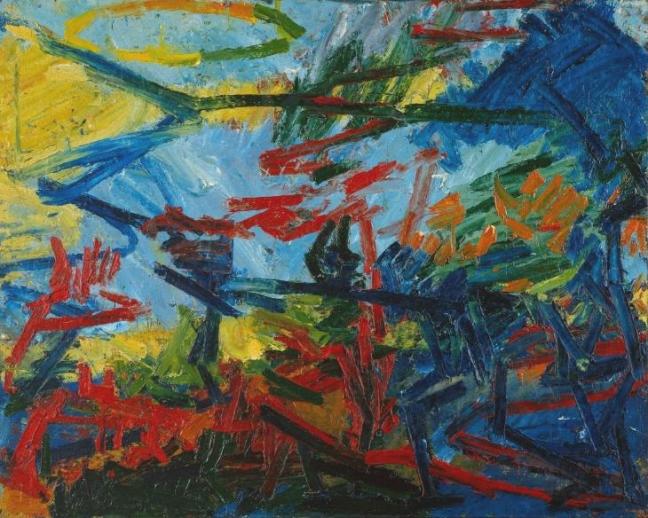
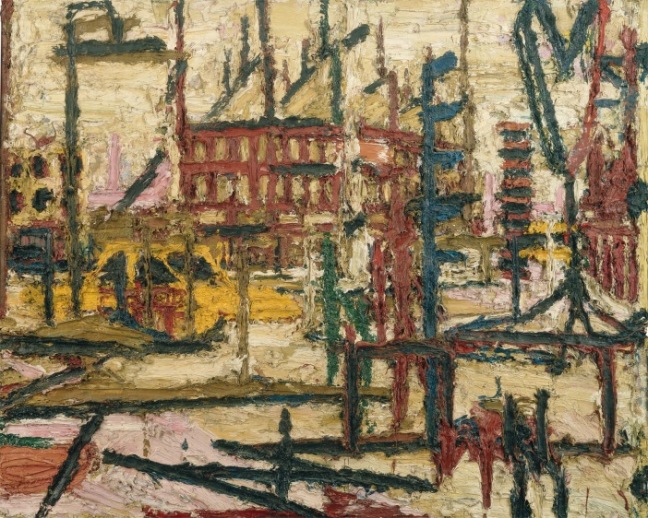
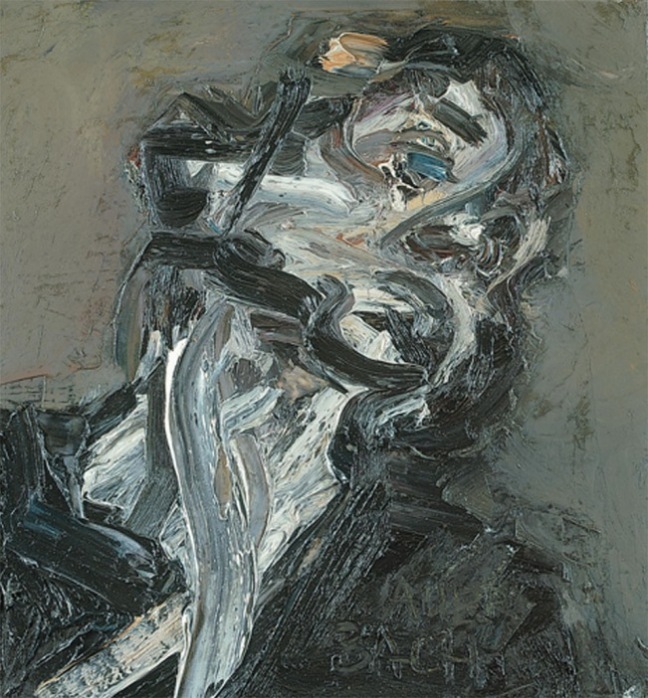
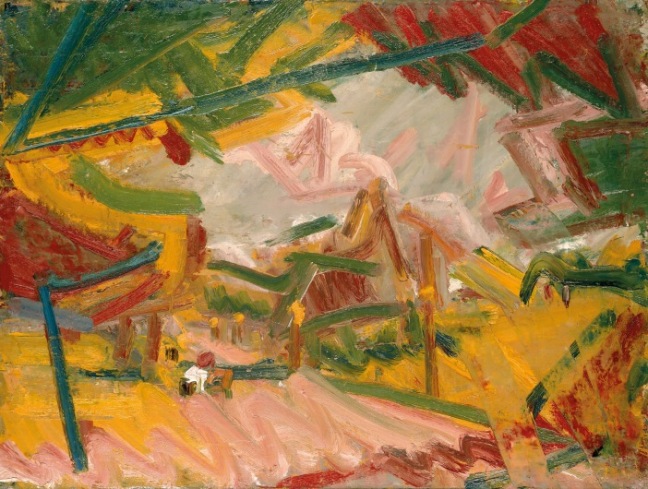
This was my first OCA study visit and I really found it inspiring and insightful. I found Gerald led the group well and I enjoyed meeting my fellow students and sharing with them their experiences of studying , this is particularly useful as distance learning often feels isolating and challenging.

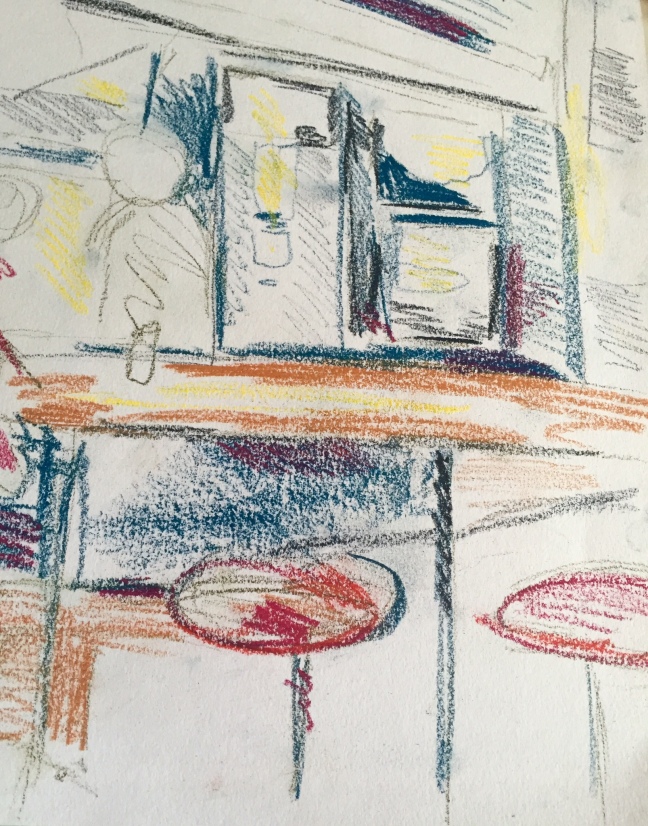
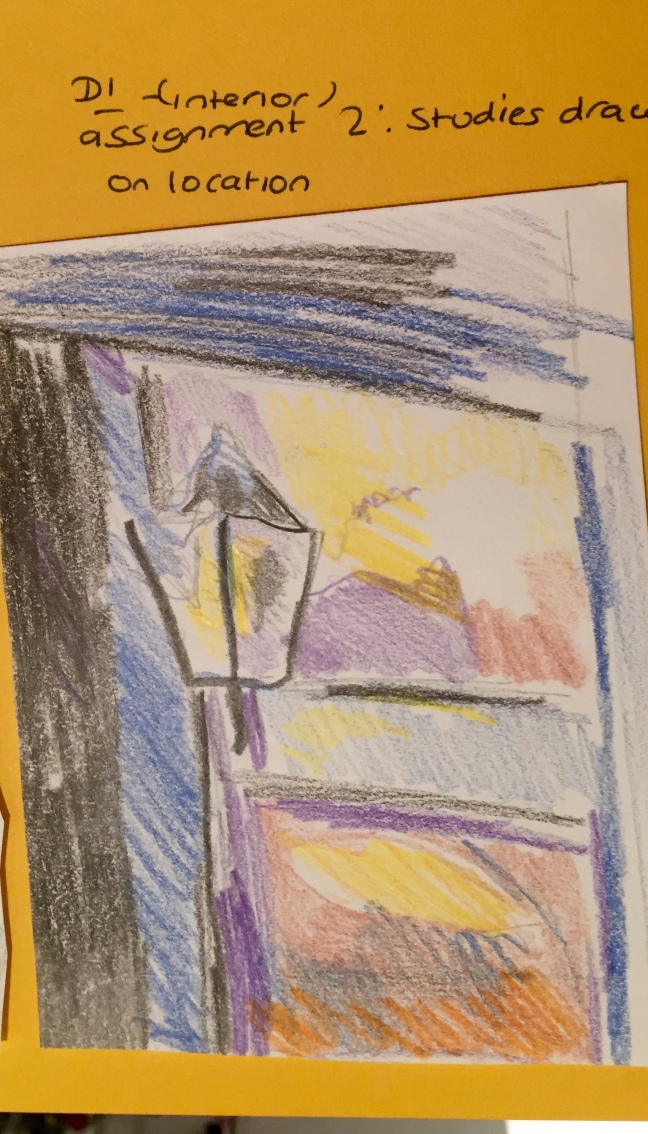
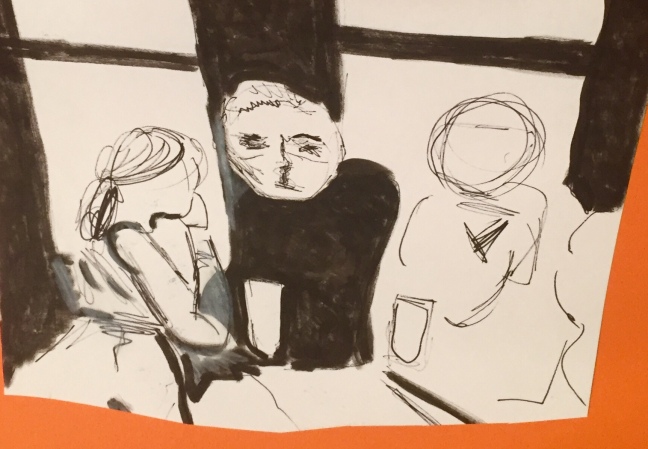
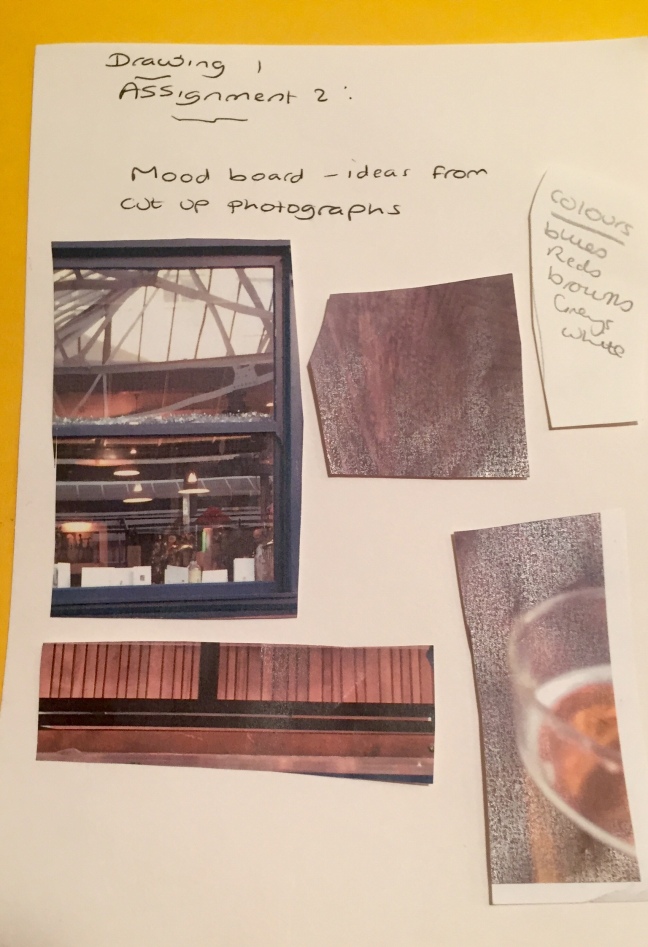
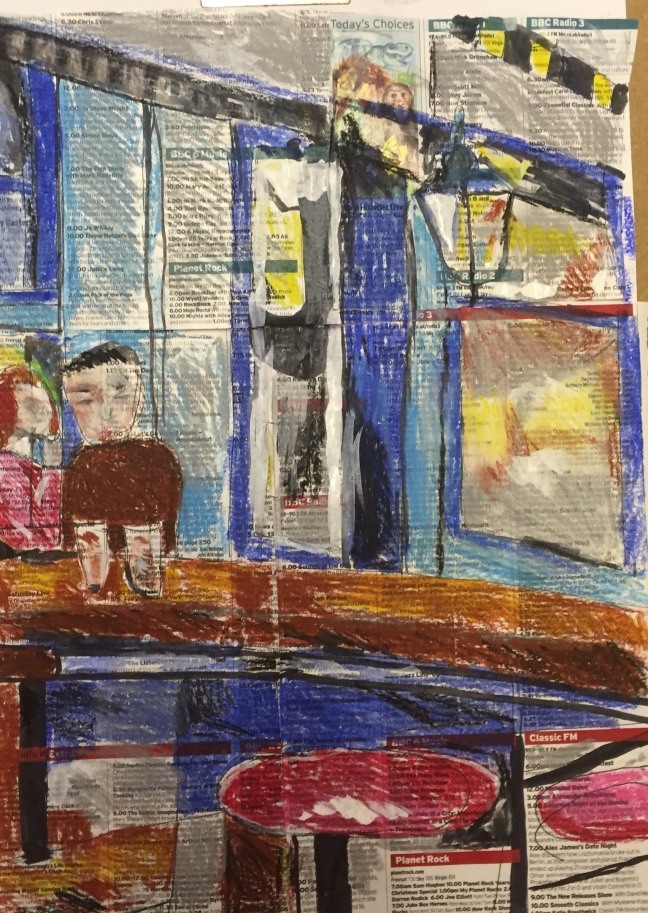
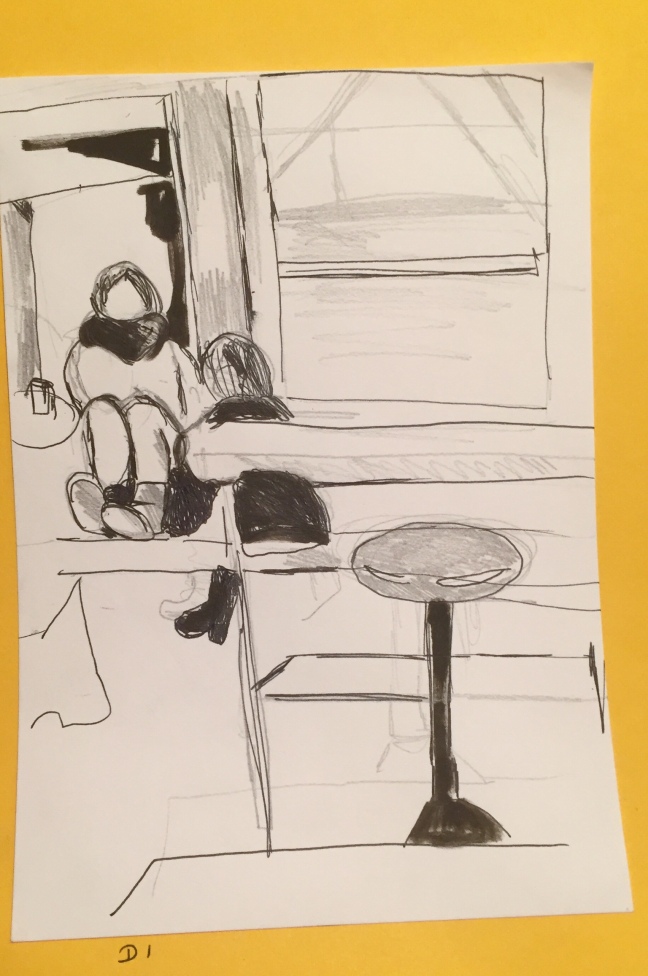
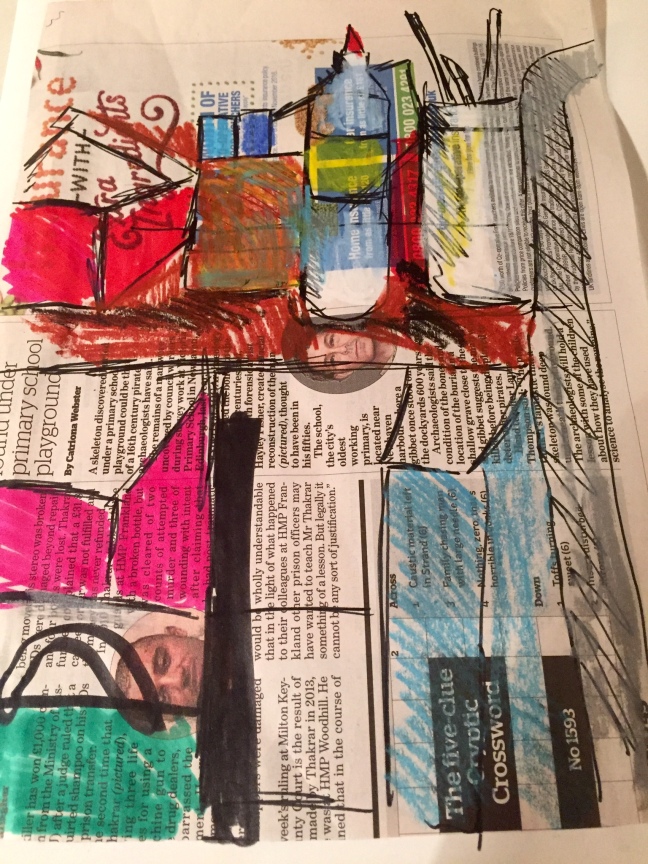
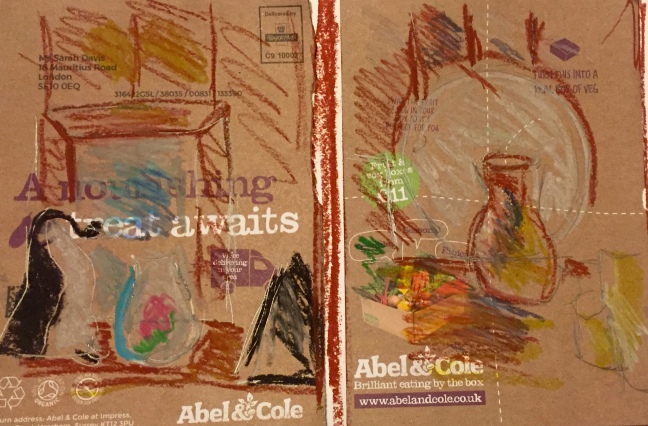
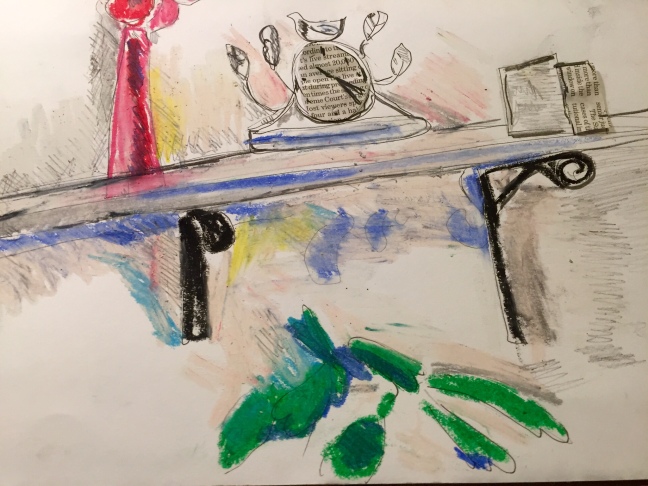
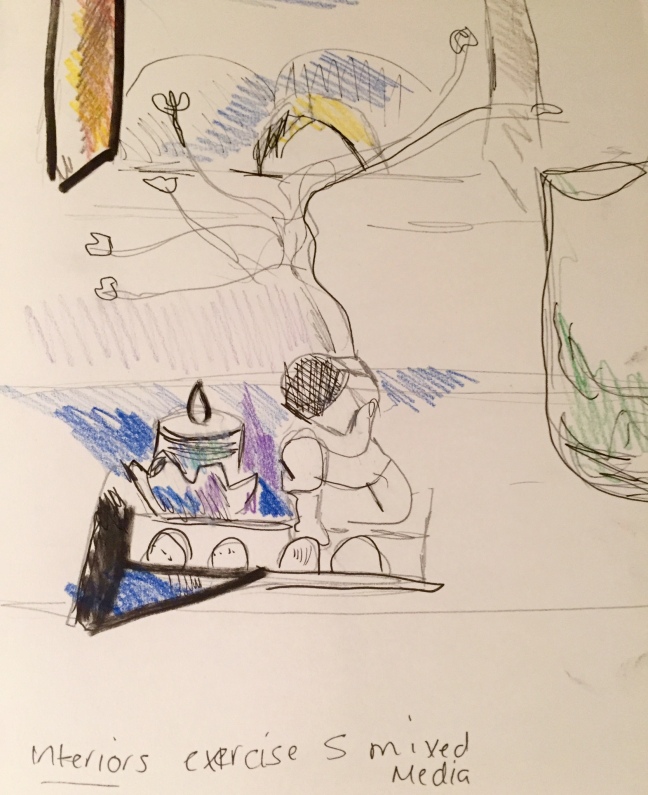
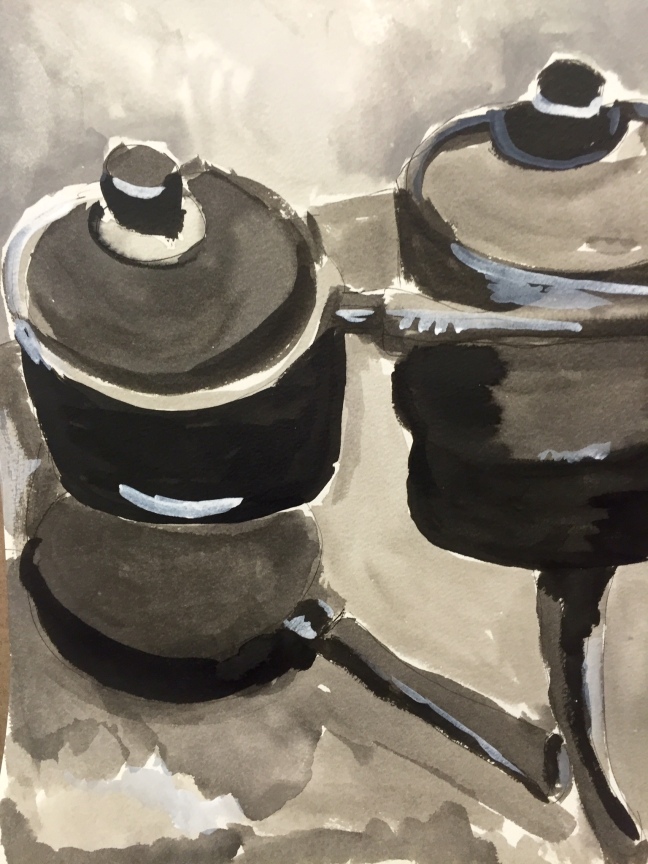 The idea is to experiment using different media to create line and wash.
The idea is to experiment using different media to create line and wash.